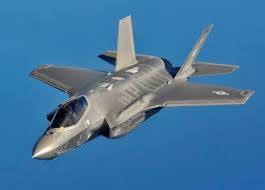The F-35 Fighter Jet: Current Developments and Future Implications

Introduction
The F-35 Lightning II is a fifth-generation multi-role stealth fighter jet developed by Lockheed Martin. It represents a significant advancement in military aviation technology and is critical for the air power of several allied nations. As tensions rise in various geopolitically strategic regions, understanding the developments surrounding the F-35 is increasingly important for both policymakers and the public.
Recent Developments
In recent months, the F-35 programme has seen several key updates that may influence future military strategies. Recently, the U.S. Department of Defense announced the rollout of the 3F software upgrade, which enhances the jet’s combat capabilities. This upgrade significantly improves sensor fusion, enabling pilots to better interpret data from multiple sources during missions.
Additionally, the F-35 fleet’s operational status is being expanded globally, with the Royal Air Force and the Royal Navy of the UK actively utilising the aircraft in various exercises, showcasing their capabilities in joint exercises with allies. With F-35s deployed in Europe, South Korea, and Japan, the aircraft is reinforcing multinational cooperation, especially in response to growing threats from state actors.
International Implications
The F-35 programme’s implications extend beyond American domestic military capabilities. The aircraft has become a focal point in international relations, especially concerning defense contracts with allies. Recently, Finland concluded a significant deal to acquire F-35 jets, indicating a shift in the Nordic balance of power, particularly in its relations with Russia. Furthermore, several nations, including Israel and Japan, have expressed confidence in the F-35’s role as a deterrent in their respective regions.
Challenges Ahead
Despite the advancements, the F-35 programme faces numerous challenges, including logistical issues and rising costs. Critics argue that the programme has been plagued with delays and technical setbacks, affecting readiness rates. Moreover, foreign military sales continue to be scrutinised, as they may inadvertently introduce advanced technologies to potential adversaries.
Conclusion
The F-35 Lightning II remains a pivotal element in modern military strategy, and its developments are crucial for national and international security dynamics. As nations continue to embrace the capabilities offered by this advanced aircraft, it is essential for military and defense analysts to closely monitor the programme’s advancements, challenges, and geopolitical implications. The outcome of these developments may significantly influence global military balances and international relations in the years to come.
